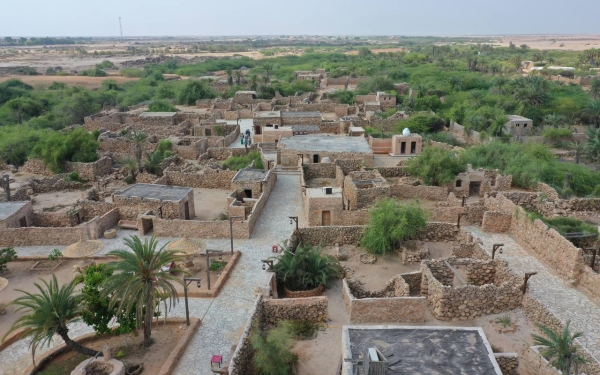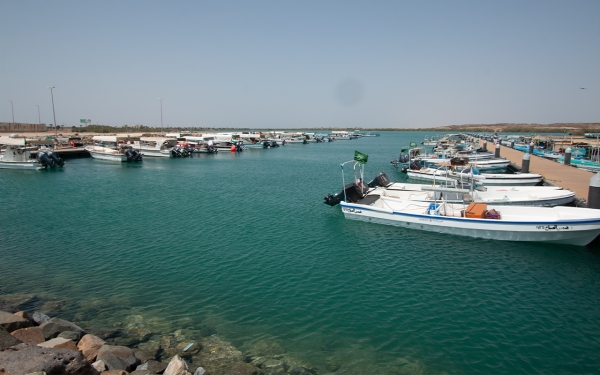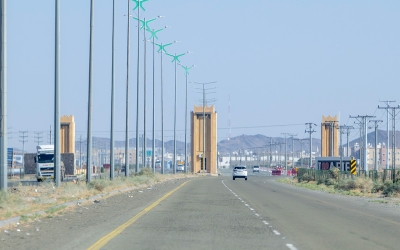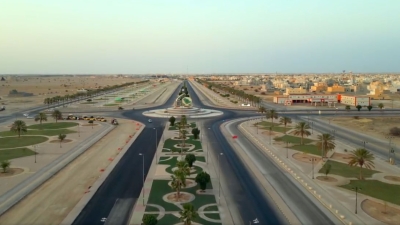

Farasan Governorate is a Category (B) governorate in Jazan Province in the southwest of the Kingdom of Saudi Arabia. It is the least populous governorate in the province, with 13,529 people, equivalent to just 1 percent of Jazan's population, according to the 2022 Saudi Census. It is the largest inhabited island in the Kingdom.
History of Farasan Governorate
Throughout history, the Farasan Islands witnessed the passage of countless peoples by virtue of their location on a commercial corridor, which is a vital waterway in the Red Sea. Since the first millennium BCE, the islands have received visitors from Arab countries, Africa, and Europe. It used to be known as Portos Ferresanus. A Latin inscription dating back to 144 was found on the island that indicates the stationing of a Roman garrison there. Farasan still retains relics of civilizations it interacted with, such as Axum and the Arabs. During World War II, the Germans built a fort on one of the archipelago’s islands.
Location of Farasan Governorate
Farasan Governorate is located to the west and southwest of Jazan City, twenty NM west of the province's shores. It lies fifty km from the seat of the emirate, between latitude 16°7´N and longitude 41°7'E, in the southeastern section of the Red Sea, with an area of about 1,050 km. Farasan Island (Greater Farasan) is the archipelago's largest island in terms of surface area and population, with an area of approximately 380 km.
Islands of Farasan Governorate
The Farasan Archipelago consists of two hundred islands of varying sizes. Greater Farasan is the most important and most populated island, the largest of the archipelago, and home to the Farasan Governorate headquarters and other government departments.
Saqid is the archipelago's second-largest island, with an estimated area of fourteen km, and is linked to Greater Farasan by a bridge built in 1985. The third inhabited island of the archipelago is Qamah, the smallest by area and population, situated southwest of Greater Farasan and separated therefrom by a waterway.
Biological diversity of Farasan Islands
The Farasan Islands represent a remarkably diverse biosphere, both on land and at sea, and were therefore declared a protected area by the Saudi Wildlife Authority (currently the National Center of Wildlife) in 1996. The islands are characterized by their pristine coral reefs and provide habitats for a broad variety of world-renowned fish and bird species, such as white seagulls, al-Ain, crab-plovers (Dromas ardeola), and the sooty falcon (Falco concolor). On land, the islands are home to the endangered Farasan gazelle (Gazella arabica).
The waters of the Farasan Islands contain more than 230 species of fish, as well as many endangered marine animals and fifty species of coral. The archipelago is also famous for its distinct seaweed and algae and the Rhizophora and Avicennia forests, which act as vital incubators for small fish and crustaceans and contain more than 230 species of fish.
On land, the Farasan Archipelago is home to the largest concentration of Arabian (Farasan) gazelles in the Kingdom. The islands are also one of the most important transit points for migrating birds, estimated at about 165 different species, and contain the largest pink-backed pelican (Pelecanus rufescens) congregation in the Red Sea and the largest osprey (Pandion haliaetus) in the Middle East. Moreover, the islands are an annual stopover for parrotfish (Scaridae), which visit Farasan once each year. The archipelago also contains more than 180 plant species, four of which are only found in the Kingdom on the Farasan Islands.
Tourism and monuments in Farasan Governorate
Farasan Islands wield unique tourism potential, contain a multitude of archaeological sites, and have long been privileged by their pearl-rich fisheries, which were one of the most important livelihoods of the inhabitants of Farasan, alongside fishing, the locals’ main occupation. The archipelago also contains important monuments such as Mount Luqman, comprised of massive, rundown stones indicative of the ruins of an ancient castle, and nearby are some ancient burial grounds, along with Bait al-Jaramal on Qamah Island and the Najdi Mosque, which dates back to 1928.
Farasan hosts the two al-Rifai archaeological houses, distinguished by their architecture style, one of which belongs to Mr. Ahmed Minwer al-Rifai and the other to Mr. Hussein Bin Yahya al-Rifai. Built in 1923, the house of Minwer al-Rifai’s interior is adorned with ribbons engraved with Quranic verses and wooden ribbons on the house’s exterior walls. Both houses and the surrounding land have been converted into a cultural center.
Archaeological sites and tourist attractions in Farasan Islands also include al-Mahsour Village, which is about forty-five km away from Greater Farasan and features a wide range of palm trees and freshwater springs. Tourist attractions in the Farasan Islands include Abrah Coast, al-Qandal Forest, located north of Farasan Island, al-Asha Coast, and the areas of Mafqudah, Faqwa, al-Qassar, al-Muharraq, and al-Hussein.
Wadi Matar is situated in the south of Farasan Island. Its rocks contain Himyarite inscriptions, whereas the island's al-Kadmi site in al-Qassar Village contains rundown buildings with large stones and remains of stones that resemble, to a large extent, Roman (Corinthian) columns.
Given the ecological diversity and rare wildlife species found on Farasan Islands Reserve, in 2021, the archipelago was added to the Program on Man and the Biosphere (MAB), one of the programs of the United Nations Educational, Cultural, and Scientific Organization (UNESCO).
Residents and visitors of Farasan Governorate rely on King Abdullah Bin Abdulaziz Airport in Jazan, the nearest airport, which is a regional airport with a capacity of approximately nine hundred thousand passengers per year.
Higher education in Farasan Governorate
Farasan Governorate has one of the leading higher education institutions in the Kingdom, the College of Sciences and Arts of Jazan University, established in the academic year 2001-2002 and the first of its kind on the island. It was first dubbed Education College, Jazan branch, and then joined Jazan University proper as the College of Science and Arts in the academic year 2005-2006. It is now called University College in Farasan and includes the majors of Nursing, Home Economics, and English Language.
Related quizzes
Related articles


